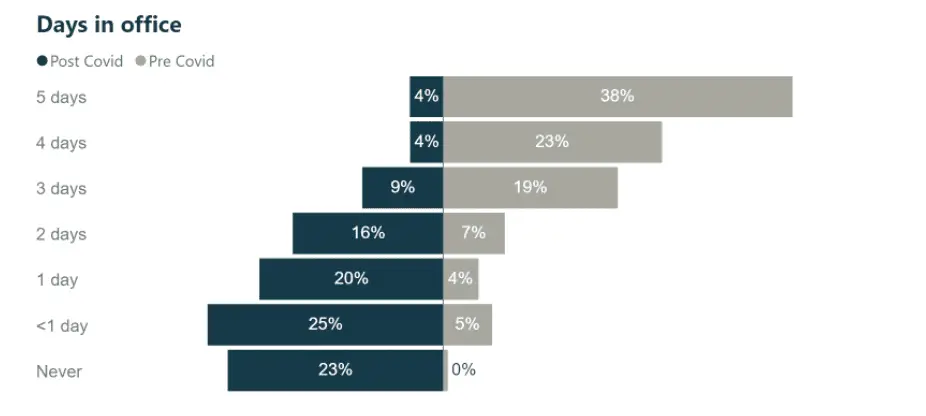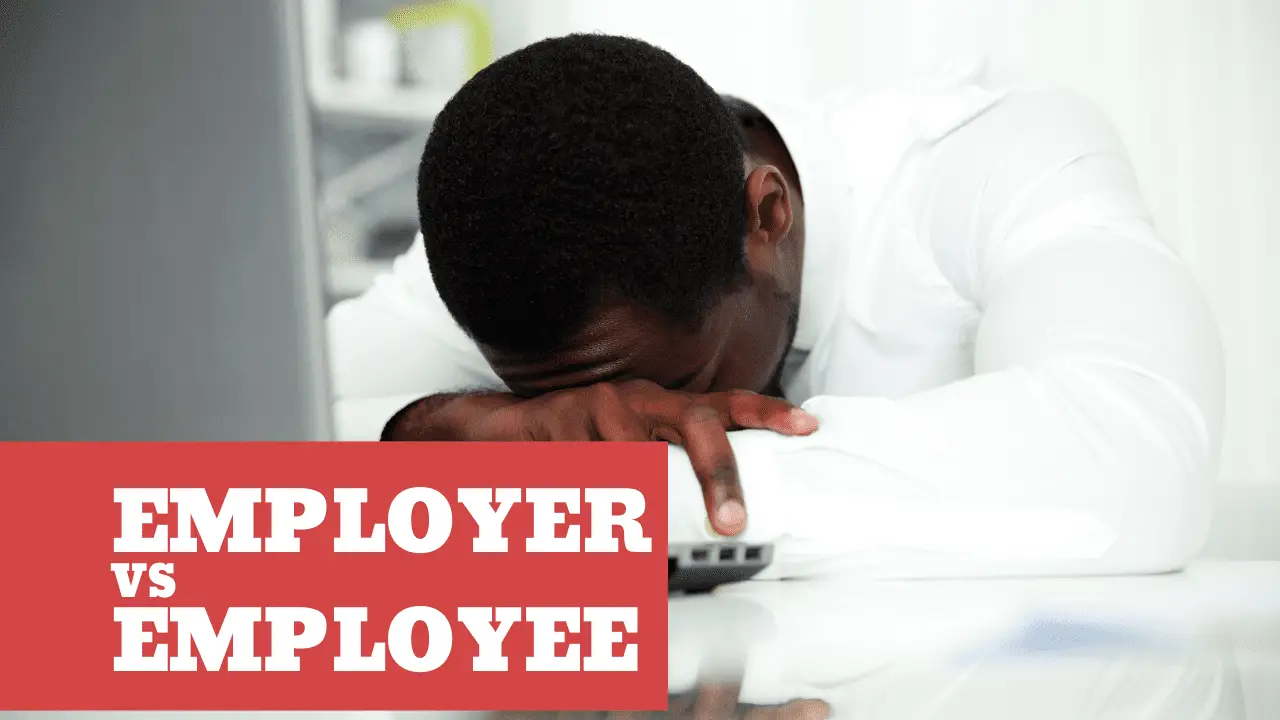As more and more employers require employees to return to the office, there is more and more evidence suggesting employees don’t want to return to the office, at least not on a permanent basis or at the levels pre-pandemic.
The Great Work Divide is the gap between where employers and employees want to work. Employers want employees to return to the office but growing data indicates employees want flexibility and autonomy to choose where and when they work. Many employers are now requiring/mandating employees’ return to the office due to a drop in productivity, social connection, culture, and collaboration.
In the short term, employers may be successful and increase office utilization. But, who wins in the long term?
Employees Do Not Want to Return to the Office
Each day a new study is being published highlighting employees’ desire for flexibility and autonomy. Data obtained by AWA through workplace surveys of nearly 10,000 employees during lockdown found that, before Covid-19, 35% of staff were happy to work five days a week, but that has now dropped to just 3%, and 86% of workers now want to work from home at least two days a week. These figures are constant across all age groups.
through workplace surveys of nearly 10,000 employees during lockdown found that, before Covid-19, 35% of staff were happy to work five days a week, but that has now dropped to just 3%, and 86% of workers now want to work from home at least two days a week. These figures are constant across all age groups.

What I find more alarming, 68% of employees want to be in the office one day or less and 48% don’t want to return to the office. In addition, 59% of knowledge workers want to work from home for four or more days.
want to work from home for four or more days.

“Employers have to realize that the genie is out of the bottle. Workers have seen that flexibility can work and bosses who are not sensitive to their employees’ needs will suffer accordingly.” Andrew Mawson explained.
explained.
Work can be Done from Anywhere
Employers and employees have learned what work can be done when the office is closed. Efficiencies have been found leveraging digital tools and time spent not commuting. The old way of doing things mindset was eliminated because we had to. New processes, equitable meetings, self-awareness, closer connections were built but we have also found that new ways to manage boundaries, fatigue, mental health, and burnout are needed.
59% of employees say their job can be done from home according to a recent study published by PEW Research Center. Of those surveyed that are going into the office, the reasons cited should cause companies concern.
published by PEW Research Center. Of those surveyed that are going into the office, the reasons cited should cause companies concern.
- A lack of space and resources at home (21%)
- Opportunity for advancement (14%)
- Pressure from a supervisor or colleague (9%)
There is a growing concern that many employees feel proximity bias may lead to greater opportunities for those that go into the office compared to those that work remotely.
Why do Employers Want Employees Back to the Office?
There have been many reasons cited why employers want employees back to the office. Many employers claim productivity has fallen, company culture, collaboration, and social connection are eroding. Some experts have gone as far as to say that employers want control back.
Whatever the reason, employers do owe it to themselves to see if the office is really dead. Large sums of investment have been made. But, what’s the cost to find out?
Future Forum Pulse Survey published in January 2022, concluded that employees not only want flexibility and autonomy in where they work but also when they work. “Desire for flexibility is particularly strong among those who have historically been underrepresented in knowledge work, including people of color, women, and working mothers.”
published in January 2022, concluded that employees not only want flexibility and autonomy in where they work but also when they work. “Desire for flexibility is particularly strong among those who have historically been underrepresented in knowledge work, including people of color, women, and working mothers.”
Seventy-eight percent of all survey respondents say they want location flexibility, while 95% want schedule flexibility.
Executives who are concerned about the Great Resignation should take note that among their employees, requests for more flexibility are not “empty threats”—72% of workers who are dissatisfied with their current level of flexibility at work say they are likely to look for a new job in the next year, compared with 58% of total respondents (up from 57% last quarter).
That last two years have shown us that properly managed hybrid working is beneficial to both employers and employees,” says Andrew Mawson, managing director of AWA. “Research among organizations we advise globally has shown only 3% of knowledge workers want to go back to the office five days a week, with the overwhelming majority wanting to work from home at least two days. Talented people will choose the employers that give them flexibility and – as we’ve seen with the so-called ‘Great Resignation’ – employees will quit jobs if their bosses force them back into the office all the time.
Adopting Work from Anywhere is the Future of Work
Prior to the pandemic, Dropbox was very much an office-based company. Only 3% of Dropbox employees worked from home. Dropbox also invested a lot of dollars into their San Francisco headquarters. I was fortunate to have the opportunity to visit the office in 2018, the space looked spectacular.
Dropbox took the opportunity during the pandemic to evaluate how they work and how the organization will work going forward. Dropbox, after a pilot program, shifted to a Virtual First model – not an entirely remote working model, but adopted processes and practices that a remote company would implement.
model, but adopted processes and practices that a remote company would implement.
Based on the data and discussions, Dropbox leaders laid out five guiding principles:
- Support the company mission: to design a more enlightened way of working
- Provide flexibility and freedom for employees
- Preserve human connection while maintaining a level playing field
- Support long-term business health
- Maintain a learning mindset by being flexible and adaptive
Sharing publicly their pivot, Dropbox results have been outstanding. Melanie Collins , the Chief People Officer at Dropbox, “Although it’s still early, Dropbox has seen a threefold increase in applicants, 15% faster time to hire, and a 16% increase in diverse candidates.”
, the Chief People Officer at Dropbox, “Although it’s still early, Dropbox has seen a threefold increase in applicants, 15% faster time to hire, and a 16% increase in diverse candidates.”
Time will tell what works. Where do you sit on the great work divide? Join OSW Community and share your thoughts. We grow collectively.

